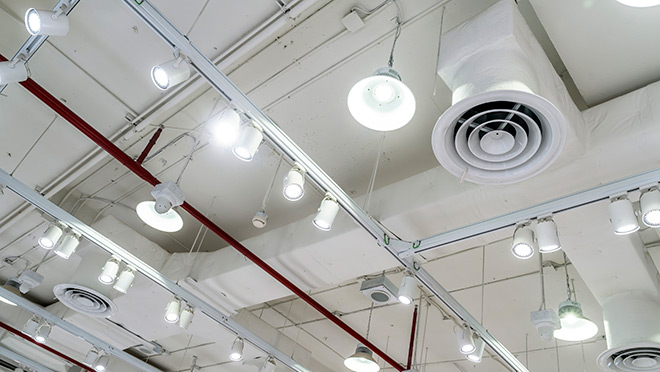Tips for making virtual inspections go smoothly

Introduced for the pandemic, virtual option may stick around
The COVID-19 pandemic has been all about finding new ways to do things, including virtual inspections of energy efficiency projects.
In keeping with B.C. government guidelines around physical distancing during the COVID-19 pandemic, BC Hydro switched its site inspections last year, both pre and post project, from on-site to remote inspections. Customers randomly selected for project inspections are contacted by email and are asked to submit photos that can help inspectors make a proper assessment of product upgrades including the number and type of products involved.
And the virtual inspection process seems to be going well enough that it could become an ongoing option for customers.
"Customers and contractors have adjusted very well, and we've done what we can to make it as simple and straightforward as possible," says Charlotte Douglas of It's On Electric, which is contracted to do site inspections for BC Hydro. "The remote process currently being used for site inspections isn't entirely new. Our remote approach was developed pre-pandemic and used for any site inspections in remote hard-to-reach locations, and also in situations where project applications need to be expedited and are well documented."
We sat down with Douglas to discuss the inspections and how to make them work better. Here are some tips generated by our conversation.
Review the request, and pay attention to details
The more information, the merrier. It's On Electric's initial email will include specific requests for photos and information required to support the project application. Try to deliver on all those requests.
Get close-up images, and improvise
Douglas urges customers and contractors to send close-ups of makes, models and wattage when asked.
"And if you can't reach the lighting we've requested, look for any replacement lamps that you might have laying around," she says.
For a video walk-through, make sure wifi is working and notifications are off
"Video conference calls are also best when there are fewer people around," says Douglas. "So try to select a walkthrough time that is the quietest for your business."
For larger applications, send any lighting audits you've had done
"When you have larger projects with many different configurations and locations, it can be challenging to break down each component clearly in the application," says Douglas. "Please send through any supporting lighting audits that you may have in advance that break things down by room for ease in navigating and understanding where everything is in the application. That way, we don't miss anything. "
And if there's anything you don't have or aren't able to get to, let It's On know and they'll help you come up with a solution.
If you're well organized, inspections can get done very quickly
One of the benefits of virtual inspections is that customers and contractors can respond to It's On Electric's list of required info on their own time.
"We find that a large number of contractors already have the information that we're requesting, which definitely makes the process very efficient," says Douglas. "We're seeing applications come in flagged for site review, and because the contractors are so organized – even after any back and forth discussion – some reviews are completed on the same day."
It's On also tries to be flexible with the scheduling of Facetime/Zoom walk-through inspections. But again, it helps to schedule a time when there are fewer people around.
Watch the sizing of images, and consider video if it's easier
Most smartphone images were great for inspections, but quality varies by the type of phone and the size of the image sent. Douglas cautions against shrinking image size and reducing the resolution to the point that images are unclear.
"Adjust the sizing down slightly so that multiple images can be sent per email, and a higher resolution is kept," she says. "Sometimes for smaller applications – such as for ten 400W metal halide luminaires being upgraded – a short video might work better. If you find that a video would work better, feel free to send it."
Alliance members should be proactive in taking images
Douglas says it's likely that remote inspections will be around for some time, and that they may remain an ongoing option. With that in mind, Alliance members should take advantage of any opportunities they have when visiting a customer facility.
"I would suggest to Alliance members that they take photos while conducting initial audits or quotes for customers," she says. "That way, when we ask for things when a project gets flagged, images are readily available."
In-person site visits still an option on request
Recognizing that the virtual process isn't always a good fit for customers, Douglas reminds contractors and customers that site visits are still possible.
"In the event that the virtual option doesn't work for a customer, we're still happy to come out and conduct site visits in person, following full COVID-19 safety protocols," she says.
Expect the inspections process to evolve
It's On Electric is working with BC Hydro on new technologies and app developments – while carefully following BC Hydro's privacy policies – that might make the email process go even smoother. This may include an online form where customers can upload photos, video and documents, right off their phones and computers.
"Sometimes there's a slight delay between when a project is actually flagged for a post site inspection and when it actually gets into our hands for review, after the BC Hydro initial review," says Douglas "So this would allow contractors to send in all the information to us right away, before we even see the application on our end, to really expedite things."
